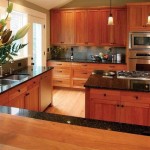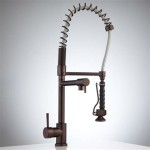All About Kitchen Knife Sharpening Stones
A sharp knife is an essential tool in any kitchen. It makes food preparation faster, safer, and more enjoyable. However, even the highest quality knives will eventually become dull with regular use. A dull knife requires more force to cut, increasing the risk of slipping and causing injury. Furthermore, a dull blade tears and crushes food, damaging cell structure and affecting flavor and texture. Therefore, maintaining a sharp edge on kitchen knives is paramount for both safety and culinary results. One of the most effective methods for achieving and maintaining a razor-sharp edge is by using a sharpening stone, also known as a whetstone.
Sharpening stones are abrasive tools used to remove small amounts of metal from a knife's blade, gradually reshaping the edge to create a finer, more acute angle. This process realigns the microscopic teeth of the blade, eliminating burrs and imperfections that cause dullness. While electric sharpeners and honing steels have their place, sharpening stones offer unparalleled control and precision, allowing the user to tailor the sharpening process to the specific needs of each knife. Understanding the different types of sharpening stones, their grit ratings, and the proper techniques for using them is crucial for achieving optimal results and preserving the longevity of valuable kitchen knives.
Understanding Sharpening Stone Grit
The grit of a sharpening stone refers to the size of the abrasive particles embedded within the stone's surface. Grit is measured in numbers, with lower numbers indicating coarser stones and higher numbers indicating finer stones. Coarser stones remove more metal quickly and are used for repairing damaged blades or reshaping severely dull edges. Finer stones remove less metal and are used for refining the edge and achieving a razor-sharp finish. Typically, a multi-stage sharpening process involves using a progression of stones, starting with a coarser grit and gradually moving to finer grits.
A common grit progression might involve a coarse stone (e.g., 200-400 grit) for initial shaping, a medium stone (e.g., 800-1200 grit) for refining the edge, and a fine stone (e.g., 3000-8000 grit) for polishing and achieving a razor-sharp final edge. Some knives may only require honing with a fine stone to maintain their sharpness, while others with significant damage may necessitate the use of an extra-coarse stone (e.g., 100-200 grit) to remove chips or reshape the bevel. The appropriate grit selection depends on the condition of the knife and the desired level of sharpness.
It is important to note that grit ratings can vary slightly between different manufacturers and types of stones. For example, a 1000-grit Japanese water stone may feel significantly finer than a 1000-grit oil stone. Familiarizing oneself with the specific characteristics of each stone is essential for consistent and predictable sharpening results. Furthermore, maintaining clean stones is crucial for optimal performance. Metal filings and debris can clog the pores of the stone, reducing its effectiveness and potentially scratching the knife blade. Regular cleaning with water or oil (depending on the type of stone) is recommended.
Types of Sharpening Stones
Sharpening stones are available in a variety of materials, each with its own characteristics and advantages. The most common types include: natural stones, ceramic stones, and synthetic stones. Each type requires different maintenance and provides a different feel during the sharpening process. Understanding these differences is crucial for selecting the appropriate stone for individual needs and preferences.
Natural Stones: Natural sharpening stones, such as Arkansas stones and Belgian Whetstones, are quarried from naturally occurring mineral deposits. Arkansas stones are typically made of novaculite, a dense, fine-grained silica rock. They are known for their consistent abrasive properties and ability to produce a very fine edge. Belgian Whetstones are made of coticule, a type of sedimentary rock containing garnet crystals. They are prized for their ability to create a very sharp and polished edge. Natural stones typically require the use of honing oil as a lubricant during sharpening.
Ceramic Stones: Ceramic sharpening stones are manufactured from aluminum oxide or silicon carbide. They are known for their consistent grit size, durability, and resistance to wear. Ceramic stones are generally harder than natural stones and can remove metal more quickly. They are available in a wide range of grits, from coarse to ultra-fine. Some ceramic stones are designed to be used dry, while others require water or oil as a lubricant.
Synthetic Stones: Synthetic sharpening stones are manufactured using a controlled process that allows for precise control over grit size and composition. They are generally less expensive than natural stones and offer a wider range of grit options. The two main types of synthetic stones are water stones and oil stones. Water stones, as the name suggests, require water as a lubricant. They are known for their fast cutting speed and ability to create a very sharp edge. Oil stones require honing oil as a lubricant. They are generally slower cutting than water stones but are less prone to clogging and can be easier to maintain.
The choice between these types often depends on personal preference, budget, and the type of knives being sharpened. Natural stones offer a traditional feel and often produce an exceptionally fine edge. Ceramic and synthetic stones offer greater consistency and more grit options. Experimentation and practice are essential for determining which type of stone works best for individual needs.
Sharpening Technique and Angle
Proper sharpening technique is critical for achieving a sharp edge and preventing damage to the knife. The goal is to maintain a consistent angle between the knife blade and the sharpening stone throughout the sharpening process. This angle, known as the bevel angle, determines the sharpness and durability of the edge. A steeper angle will create a more durable edge, while a shallower angle will create a sharper edge. The appropriate bevel angle depends on the type of knife and its intended use.
For most kitchen knives, a bevel angle of 15 to 20 degrees per side is recommended, resulting in a total angle of 30 to 40 degrees. This provides a good balance between sharpness and durability. To maintain a consistent angle, it is helpful to visualize the angle and practice with a sharpening guide. A sharpening guide is a tool that helps to hold the knife at a consistent angle relative to the stone.
The sharpening process typically involves the following steps. First, the stone needs to be prepared by soaking it in water (for water stones) or applying honing oil (for oil stones). Next, place the knife blade on the stone at the desired angle. Apply gentle pressure and draw the knife across the stone, maintaining the consistent angle. Alternate strokes between both sides of the blade, ensuring that each side receives an equal number of strokes. Over time, a burr (a small, thin edge of metal) will form on the edge of the blade. This burr needs to be removed by stropping the blade on a fine stone or a leather strop.
Stropping involves drawing the blade across the stone or strop in the opposite direction of sharpening, with the spine of the blade leading. This removes the burr and polishes the edge. It is important to be patient and take the time to practice proper technique. Rushing the sharpening process can result in an uneven edge or damage to the blade. Regular honing with a honing steel can help to maintain the sharpness of the edge between sharpenings. A honing steel realigns the edge of the blade and removes any minor imperfections.
In conclusion, the ability to sharpen knives using stones has a direct impact on efficiency and safety in the kitchen. By understanding the various types of stones, their grit ratings, and the correct sharpening techniques, anyone can maintain a sharp edge on their knives and enjoy the benefits of effortless and safe food preparation. Regular practice and attention to detail are key to mastering the art of knife sharpening.

The Beginner S Guide To Whetstone Sharpening Ethan

Knife Sharpener Sharpeners To Keep All Your Knives Sharp Times Of

How To Use A Sharpening Stone In 6 Easy Steps W

Knife Supplies Blog 5 A Comprehensive Guide To Sharpening Stone Materials And Grits

How To Use A Sharpening Stone In 6 Easy Steps W

Manual Knife Sharpening Stone For Home And Commercial At Rs 300 Piece In Prayagraj

Hannea Knife Sharpeners For Kitchen 1000 6000 Double Side Sharpener Stone Sharpening In Buy

How To Use A Sharpening Stone Knives

Blue White 1000 6000 Kitchen Knife Sharpening Stone Whetstone China Made In Com

Dn Knife Sharpener Stone Double Sided Fine Coarse Sharpening Kitchen
Related Posts








